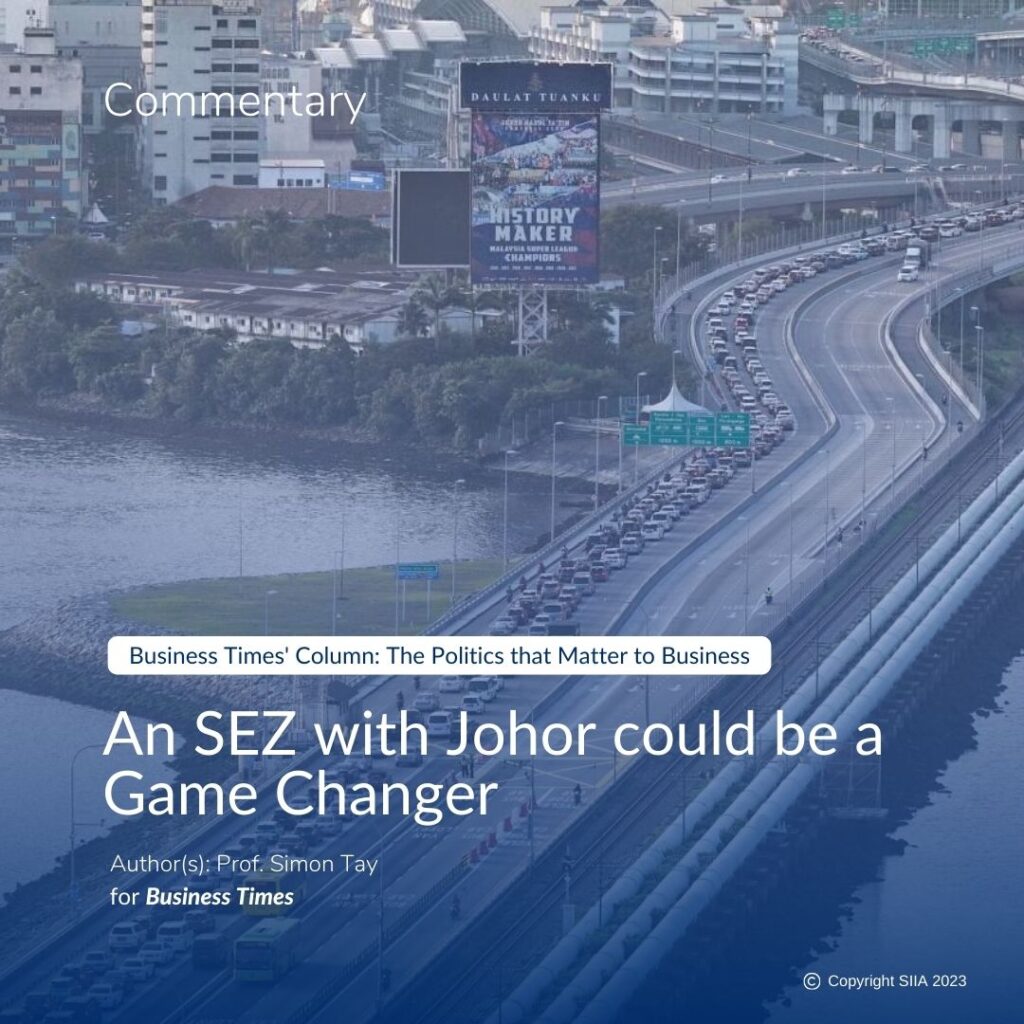March was a month of many milestones. The nation marked the first anniversary of the death of Singapore’s founding Prime Minister Lee Kuan Yew. It has been half a year since the General Election, when voters gave the Government a new and stronger mandate. And the new Finance Minister, Mr Heng Swee Keat, delivered Budget 2016 with an overarching theme of preparing for the future.
This is not crystal ball gazing. There are steps, to be taken in the short term, to address concerns about the slowing economy and job security. These current concerns underscore initiatives such as the formation of the Committee on the Future Economy and the SkillsFuture movement. Singapore’s economy is facing pressure on a number of fronts and needs a revamp.
There will no doubt be calls for more immediate action, and some policy adjustments will be needed. However, there must also be an impetus to begin reforms even though it may take five years or more to see tangible results. Efforts to transform the domestic economy also need to reflect developments in the region.
While the region is facing challenges and competition from elsewhere, Asia as a whole, and the Association of South-east Asian Nations (ASEAN) in particular, continues to outperform other parts of the world. At the end of last year, ASEAN leaders officially inaugurated the ASEAN Community. While still incomplete and uneven, ASEAN is moving towards integration of its economy and greater cooperation.
Back to the question of our island-city’s economic future, the region offers solutions to a number of our economic constraints, such as expensive land and limited workers. The region as a whole has a young and dynamic working population. In many ASEAN nations, more than half the population is below the age of 30. There are also ample land and other resources in Singapore’s near-abroad.
For decades, Singapore has been working towards regionalising its economy, going back to efforts in the 1990s such as the SIJORI Growth Triangle — encompassing Singapore, Johor in Malaysia and Riau in Indonesia — and the Suzhou Industrial Park in China. Some of these projects have faced challenges and limits but, overall, progress has been made. Singaporean industrial parks, for example, dot the region and the country is a major investor in many regional economies.
But the time has come to position Singapore for another big step forward towards a new version of regionalisation, Regionalisation 2.0. This will be different from what we see today, not just in the number of projects but in the quality of engagement.
Currently, many companies manage their regional investments or holdings with staff based in Singapore. Yet with Regionalisation 2.0, as other ASEAN economies mature, we may see a time when more Singaporeans may have to become comfortable with living and working elsewhere in South-east Asia. Some will still fly in and out of Singapore, but many may need to undertake longer overseas postings.
Conversely, in some areas of ASEAN, managerial and professional talent is in short supply. Here, Singaporeans and others working from Singapore can be part of the solution. To some degree, this is already happening. But this relationship can be deepened.
This will not be easy. In his Budget Speech, Mr Heng stressed that “Transforming through Innovation” is the core idea behind Singapore’s economic restructuring, driving efforts to internationalise SMEs and overhaul entire industries. But this transformation will require more from Singapore than just building the hardware of connectivity and improving the skills of workers. It will also involve changing mindsets.
If and when Singapore’s economic future becomes more deeply tied with that of its neighbours, there will be a far greater flow of people across borders. This will come with a commensurate need for cultural and other forms of understanding.
The ASEAN Community is meant to have three pillars, with economic integration going hand-in-hand with political-security and socio-cultural cooperation. But at present, an ASEAN sense of identity only exists in abstract. Almost no one can sing the ASEAN anthem, officially adopted by the grouping in 2008.
But even as Singapore reinvents itself as an economy and society, it must also figure out where it stands in relation to its neighbours. In 1972, Singapore’s then Foreign Affairs Minister S Rajaratnam argued that the Republic should become a global city. However, Mr Rajaratnam also warned that the true challenge for Singapore would not be creating economic links to world markets, but rather how to “equip our people intellectually and spiritually” to live in an interconnected world.
This is why the Singapore Institute of International Affairs has launched a new programme, Global Citizens Singapore, to encourage the nation’s young workers and professionals to think about the country’s future in the regional and global context.
If Singapore is to grow and flourish as a global city, Singaporeans and those who live in and are committed to this country can and should aim to be global citizens. For Singapore to continue being a hub as our neighbours rise, we will need, with Regionalisation 2.0, to understand and engage the region more deeply.
ABOUT THE AUTHORS:
Nicholas Fang and Simon Tay are respectively Executive Director and Chairman of the Singapore Institute of International Affairs (SIIA). This article was published in TODAY on 28 April 2016.
Photo Credit: chenisyuan / CC BY-SA 3.0




